Iceland is an island country that lies just below the Arctic Circle in the Arctic and North Atlantic oceans. It is about 200 miles (320 kilometers) east of Greenland and about 650 miles (1,050 kilometers) west of Norway.
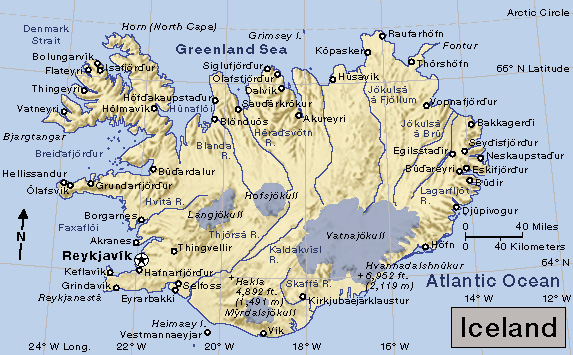
Iceland is sometimes called the Land of Ice and Fire because large glaciers lie next to steaming hot springs, geysers, and volcanoes. The country was named Iceland by an early explorer who was upset by seeing the coastal waters choked with ice after an unusually cold and long winter. But Iceland is not as cold as most places so far north. The Gulf Stream ocean current warms most of Iceland’s coast. Iceland is also a land of midnight sun. It is light almost 24 hours a day in June and dark for a similar period in December.
Most Icelanders live in coastal towns. Many of them make their living from the sea, either by fishing or by working in fish processing plants. Almost all the country’s exports are fish or fish products.

People from Norway and from Viking colonies in Britain and Ireland settled Iceland beginning about A.D. 870. Norway gained control of Iceland in 1262. After 1380, Denmark ruled the island. In the late 1800’s, the Icelandic government regained control over internal affairs. In 1918, Iceland became a self-governing kingdom united with Denmark. The country gained full independence in 1944. Its official name in Icelandic is Lydveldid Island (Republic of Iceland). Reykjavík is the capital and largest city.
Government
National government.
Iceland is a republic. The people elect a president, who serves for four years. The president is the official head of state but has little power. The prime minister and the Cabinet propose and carry out government policies. They are appointed by the president with the approval of the Althing (parliament).

The Althing passes laws for the country. The people elect 54 of the 63 Althing members. The other 9 seats are divided among the political parties so that the percentage of representatives each party has in the Althing is about the same as the percentage of votes each party received in the elections. All Althing members serve four-year terms.
Loading the player...Iceland's national anthem
Local government.
A magistrate appointed by the national government and representatives from the rural communities govern each county. Councils, elected to four-year terms, govern the towns. Local governments handle welfare, education, health, roads, and law enforcement programs. Some local governments also own fishing boats or operate businesses, such as fish processing plants.
People
Iceland was settled more than 1,100 years ago by people from Norway and from Viking colonies in Britain and Ireland. Some of these settlers had married Celtic people, and some had Celtic slaves. Today’s Icelanders resemble the people of Ireland, Scotland, and Scandinavia (the countries of Denmark, Norway, and Sweden).
Nearly all Icelanders live near the coast. About half of the people live in or near Reykjavík, and the rest live in villages and small towns around the island.
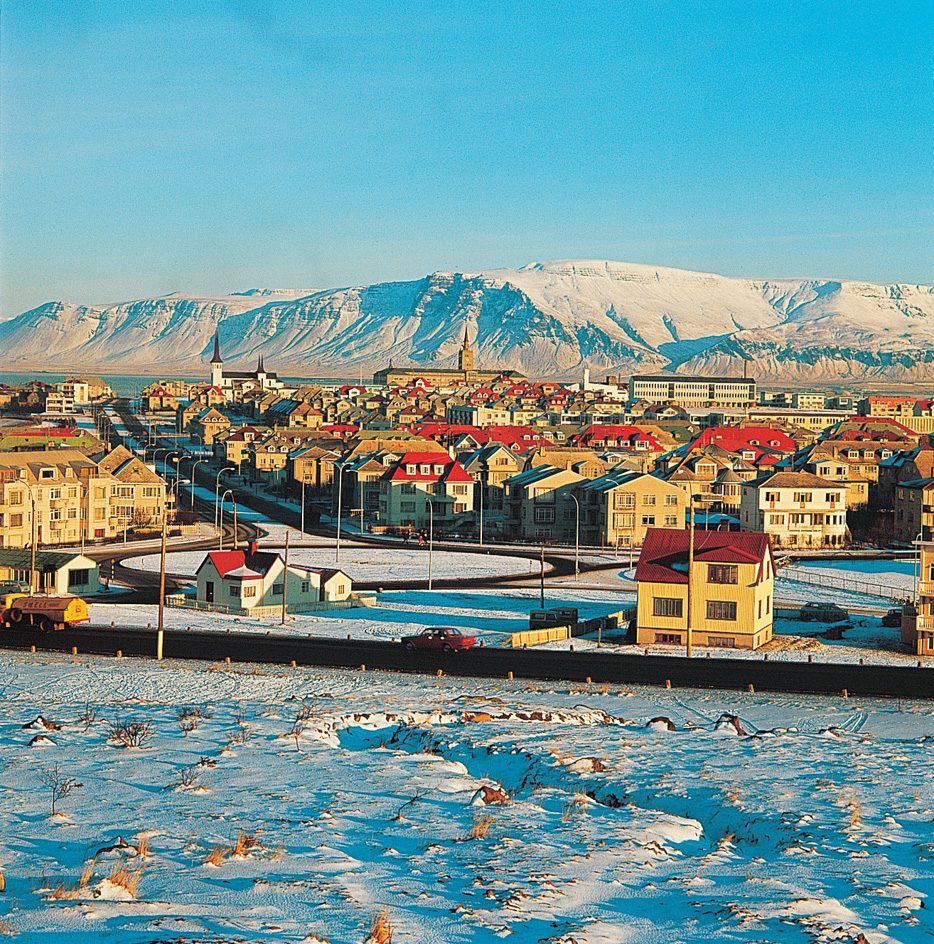
Icelanders speak a Scandinavian language called Icelandic. The language is so much like Old Norse, the original language of their ancestors, that most people today are able to read tales and poems written in the 1100’s and 1200’s. Most Icelanders also speak two or more foreign languages, usually English, German, or a Scandinavian language.
Icelanders do not have family names. They have a first name, such as Asgeir or Inga, and a second name that combines the father’s first name and -son for a male or -dottir for a female. Thus, if Asgeir and Inga’s father were Jon Stefansson, their names would be Asgeir Jonsson and Inga Jonsdottir. Because there are no family names, all Icelanders are properly addressed by their first names. Also because there are no family names, a woman does not change her name with marriage. So many Icelanders have the same name that telephone directories list each person’s occupation in addition to his or her name and address.
Way of life
The cost of living in Iceland is high because so much of what Icelanders buy—from automobiles to paper—is imported. Households often require two or more incomes. Most women work outside the home, and some men hold more than one job. The government provides day care for young children of working parents.
Before marrying, many young couples live together in the home of either the man’s parents or the woman’s parents. They may live there for years while working and saving their money for an apartment or a house. During this time, they may have one or more children. More than 60 percent of all first-born children in Iceland are born before their parents are married. Most couples marry only after they are economically self-sufficient.
Housing.
Icelanders spend a large portion of their incomes on their houses, equipping them with imported television sets, refrigerators, electric stoves, and other appliances. Houses were once built of turf and stone in the country and wood in the cities. But most houses are now built with reinforced concrete, which is not easily damaged by earthquakes or by the high winds that sweep the coasts. Many people paint the outside of their house a pastel color. Natural hot water piped from hot springs is used throughout Iceland for hot tap water. It is also used to heat buildings and to heat greenhouses where fruits, vegetables, and flowers are grown.
Food.
Icelanders eat more lamb and fish than do people in most other countries. Even hot dogs are made of lamb rather than beef or pork. Special Icelandic foods include blood sausages and boiled sheep’s head. A traditional dessert is skyr, made from milk curds. Skyr is like thick sour cream, and it is usually served with sugar and cream. 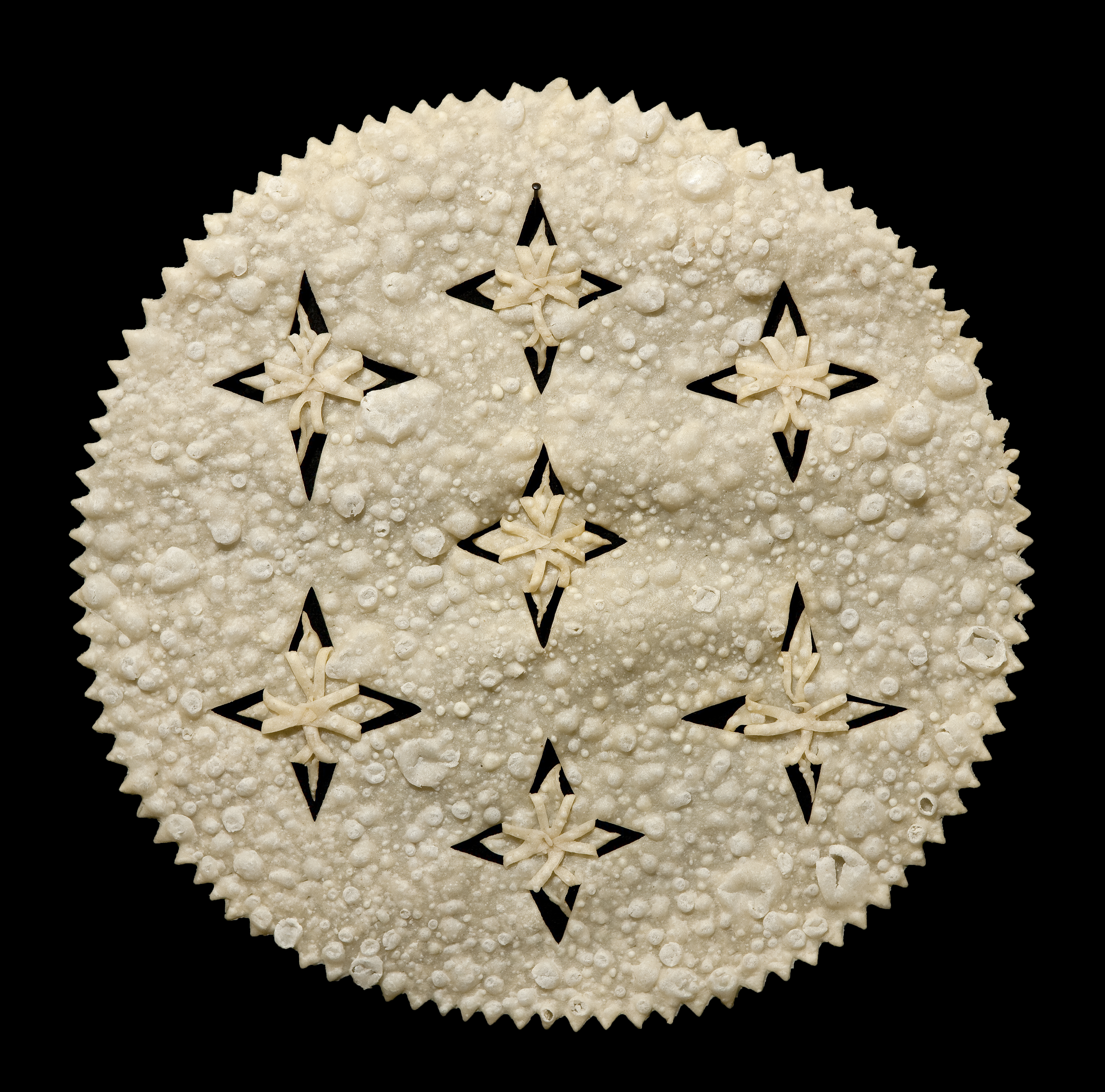
Recreation.
Icelanders like sports, especially swimming. People swim throughout the winter in indoor pools and in outdoor pools that are warmed by hot springs. Icelanders also like basketball, handball, skiing, soccer, and a kind of wrestling called glima. Many people play chess and bridge. Iceland has several theaters and a symphony orchestra.
Religion.
Most Icelanders belong to the state church, the National Church of Iceland (also called the Evangelical Lutheran Church of Iceland). Some belong to the Lutheran Free Churches and a few belong to other Protestant churches or to the Roman Catholic Church. Iceland also has an official pagan church.
Education.
The government requires children from 7 to 15 years of age to attend school, except those in sparsely populated areas. In rural areas, children ride buses to school or attend boarding schools. After six years of primary school and three years of general secondary school, children may attend grammar school for four years.
Iceland has several universities and colleges. The oldest and most important institution is the University of Iceland, in Reykjavík. The country also has specialized schools that teach agriculture, the arts, and engineering and technology.
Land and climate
A large plateau covers most of the island. But the land drops sharply to grassy lowlands along the coast.
The lowlands
provide the only livable areas in Iceland. Grass grows there, and the people can raise sheep and some food crops. Part of the Gulf Stream flows around the southern and western coasts and parts of the northern coast, warming the lowlands and keeping the ports free of ice all year long. Summers are mild, and winters are cool. In Reykjavík, the average temperature is 52 °F (11 °C) in July and 30 °F (–1 °C) in January. The city gets about 30 inches (76 centimeters) of rain a year.
The inland plateau
is a rugged, barren area about 2,500 feet (762 meters) above sea level. A fault line (line of breaks in the earth’s rocky outer shell, along which rock has moved) runs across Iceland. It makes the plateau a land of violent natural wonders, including volcanoes, hot springs, steaming geysers, glaciers, and glistening lava fields. Earthquakes are fairly common. 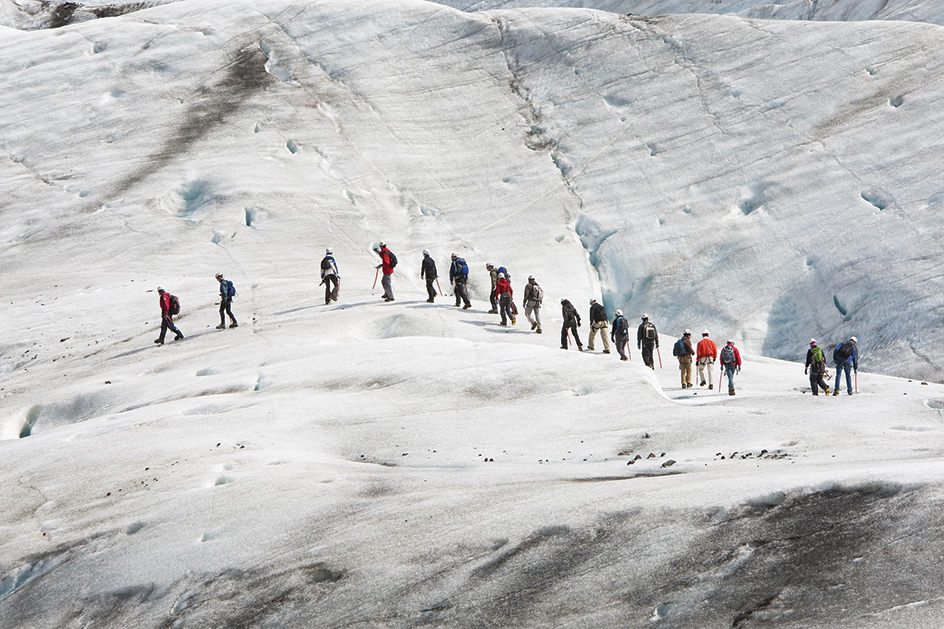
More than 200 volcanoes have erupted in Iceland, spreading lava and rocks over the plateau. Some of the volcanoes are still active, including Hekla, a volcano that is well known for its large eruption in 1947 and 1948. There are also active volcanoes under the sea off the Icelandic coasts. One of them erupted in 1963 south of Iceland and formed a new island called Surtsey. In 1973, a volcano that had been dormant for more than 5,000 years erupted on the island of Heimaey, south of Iceland. It poured volcanic ash over the island’s only town, Vestmannaeyjar, forcing evacuation of all the residents. In 2010, a volcano erupted under the Eyjafjallajökull glacier, creating a gigantic ash cloud that disrupted air travel across Europe. In 2011, the Grímsvötn volcano erupted, but it interfered with aviation only briefly. In the early 2020’s, the Fagradalsfjall volcanic system produced lava flows on the Reykjanes Peninsula, southwest of Reykjavík. The eruptions began after a series of earthquakes in the area.
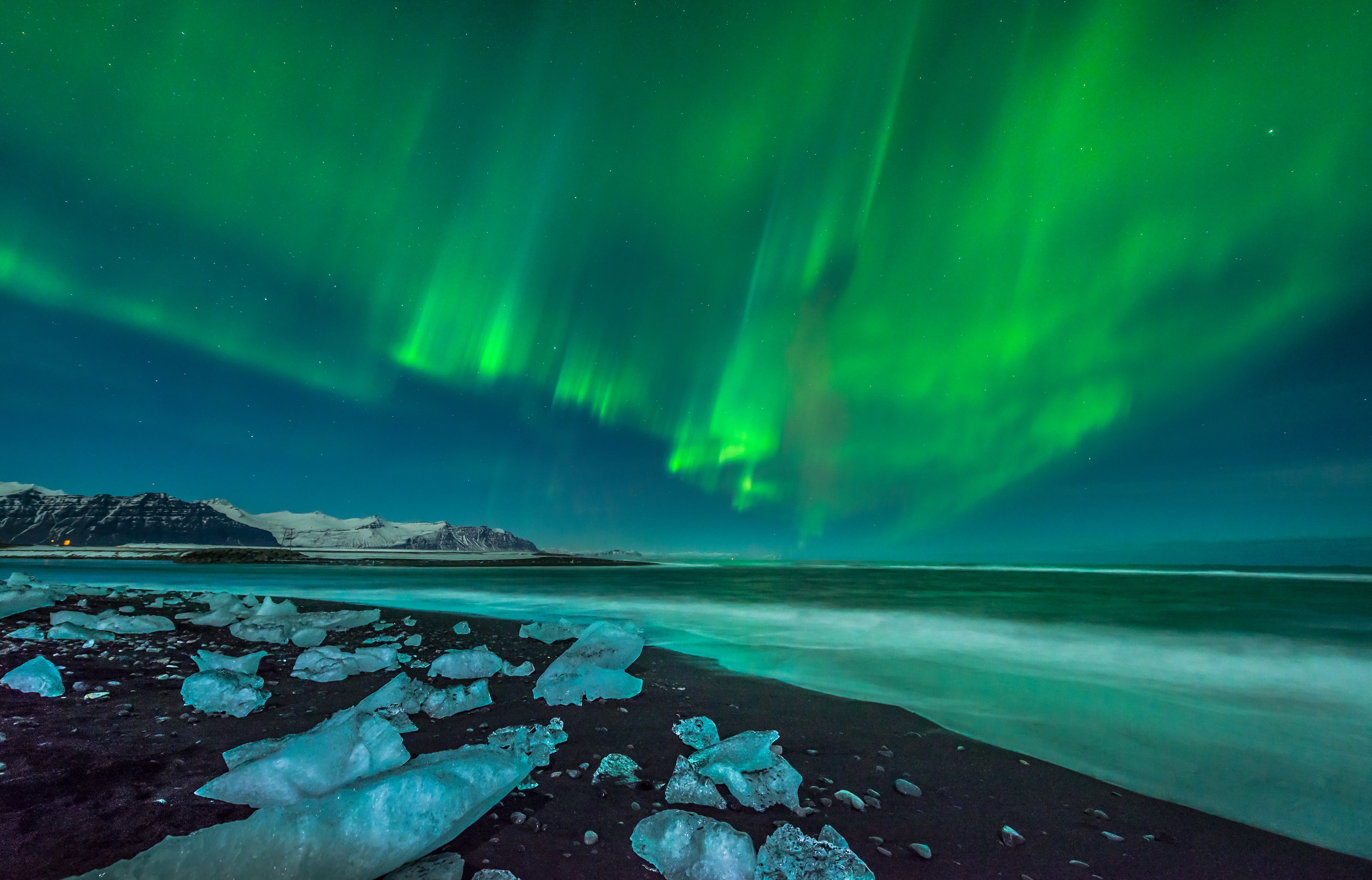
Iceland has more hot springs and sulfur steam areas than any other country. Some of the hot springs are geysers that spout streams of water into the air. In fact, the word geyser comes from the name of Iceland’s most famous hot spring, Geysir, which spouts water about 195 feet (59 meters) into the air.
Glaciers cover one-eighth of the land. These huge sheets of ice are three-fourths of a mile (1.2 kilometers) thick in some places. The largest glacier, Vatnajökull, covers 3,130 square miles (8,100 square kilometers) and is as big as all the glaciers on the European continent combined. Glaciers have cut deeply into the bottoms of many fiords (long, narrow inlets of the sea) and have made good natural harbors at Akureyri and Isafjordur. Ancient glaciers also dug holes in the land, and the countryside is dotted with small lakes. The largest lake is Thingvallavatn in the southwest.
Some glacial regions receive about 180 inches (457 centimeters) of rain each year. Water from the rain and melting glaciers forms rushing rivers and beautiful waterfalls. The longest river, Thjorsa, flows 150 miles (241 kilometers) through southern Iceland. Hydroelectric plants have been built on the swift-flowing Laxa and Sog rivers. The most beautiful waterfalls in Iceland are Gullfoss in the south and Dettifoss in the north.
Economy
Iceland has few natural resources, and only a small percentage of the land can be used for farming. However, Iceland’s coastal waters are rich in fish. The country depends heavily on its sales of fish and fish products for the money it needs to buy needed items from other countries.
Fishing industry.
Fish processing is one of the most important industries in Iceland. Many people catch fish for a living or are employed in fish processing plants. Fishing crews use large trawlers (fishing boats) to drag fish nets along the ocean bottom. On small motor boats and open boats, crews often use long-lines to catch fish. Some of the long-lines may be 10 miles (16 kilometers) long and have as many as 20,000 hooks. The chief fish caught are capelin, cod, Greenland halibut, haddock, mackerel, redfish, and saithe. In 2006, Iceland resumed commercial whaling. Most of the fish are dried, salted, or quick-frozen for sale to other countries. 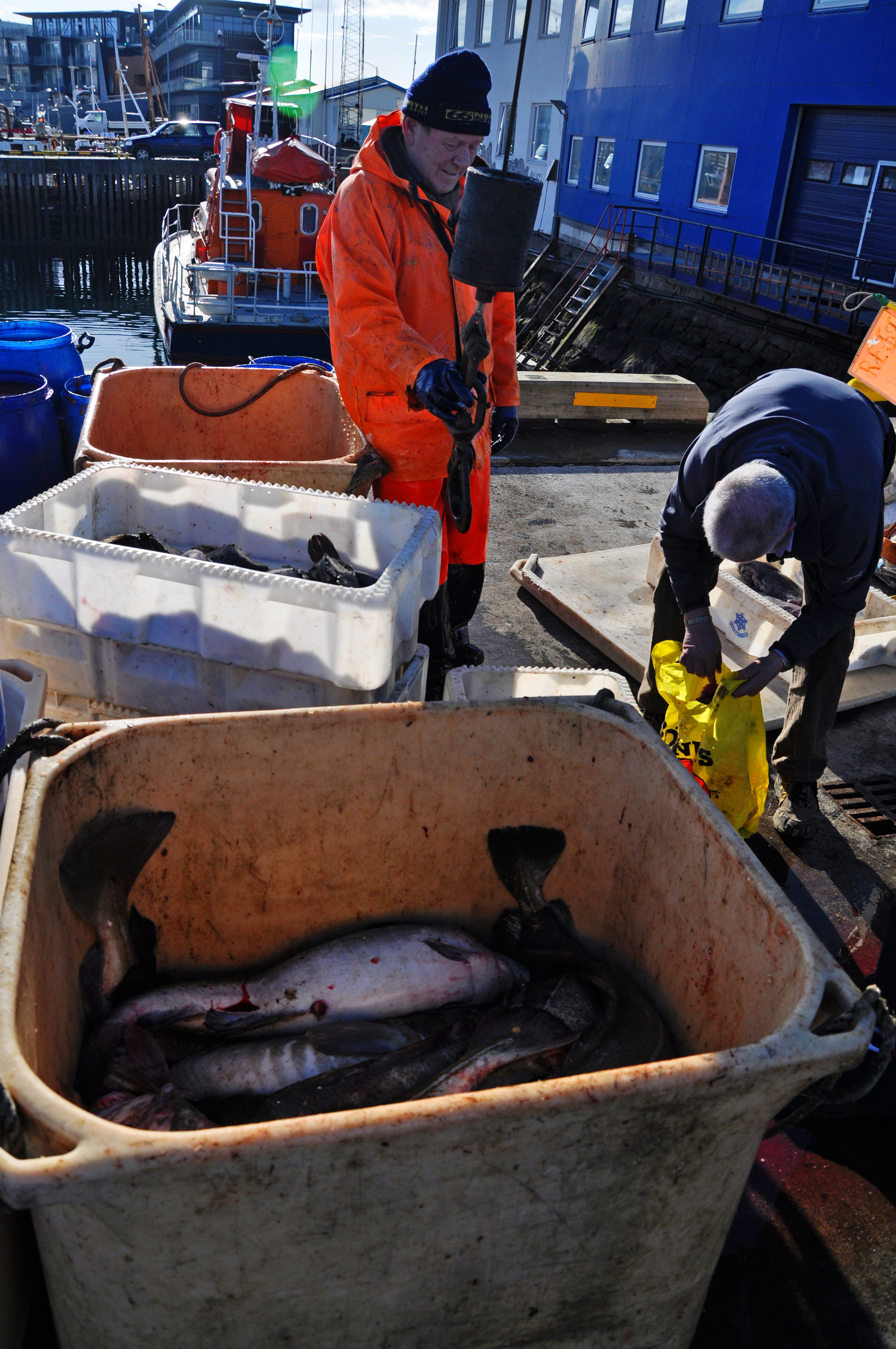
Manufacturing.
Manufacturing accounts for about 10 percent of both Iceland’s employment and its gross domestic product (GDP). The GDP is the total value of goods and services produced within a country in a year. In addition to fish products, Iceland also manufactures aluminum, cement, chemicals, electrical equipment, food products, and machinery. The Icelandic government has developed some of its industries with aid from other countries.
Agriculture.
Agriculture contributes a small amount to Iceland’s economy. Most farmers raise sheep for meat and wool and cattle for beef and milk. They also raise chickens, pigs, and many small Icelandic horses.
The country’s main crop is hay, which the farmers use to feed their livestock. Farmers can raise two or three crops of hay each year because of the heavy rainfall and the long hours of summer sunshine. Farmers also grow root crops, such as turnips and potatoes.
Since the 1930’s, farmers have developed an industry that uses greenhouses to capture heat from hot springs. Most greenhouses are in the southern part of the country. In the greenhouses, farmers can grow cucumbers, flowers, tomatoes, and even bananas.
Foreign trade.
Iceland’s main exports include aluminum, animal feed, and fish and fish products. The country imports chemicals, food, machinery, motor vehicles, and petroleum and petroleum products. Iceland’s main trading partners include China, Denmark, Germany, the Netherlands, Norway, the United Kingdom, and the United States.
Transportation and communication.
Iceland does not have any railroads. Its people travel mainly by bus, automobile, and airplane. Except for the streets in the cities, most of Iceland’s roads have gravel surfaces.
Icelandair, the nation’s airline, provides regular European and transatlantic service. There is an international airport at Keflavik, near Reykjavík. Iceland’s chief ports are Akranes, Akureyri, Hafnarfjordur, Isafjordur, Keflavik, Reykjavík, and Siglufjordur.
Iceland’s government owns the country’s main radio and television stations. Private television and radio stations are also popular in Iceland. Mobile phone usage and Internet usage are widespread.
History
Early days.
Ingolfur Arnason, who fled from Norway, and his followers settled in Iceland about A.D. 870. Other settlers from Norway and from Viking colonies in Britain and Ireland helped increase the population of Iceland to about 25,000 in the next 60 years. In 930, the settlers of Iceland established the Althing, the world’s first parliament.
Among the early settlers was the Viking explorer Erik the Red. He lived in Iceland for several years before he sailed off to Greenland about 982. Several years later, he established the first colony there.
The 1100’s and 1200’s were Iceland’s golden age of literature. In the early 1200’s, Snorri Sturluson, a poet and historian, put into writing some of Iceland’s greatest sagas (tales about Icelandic and Scandinavian heroes). He also completed his Prose Edda, a textbook for poets, which included stories about the gods and heroes of early Germanic tribes.
Civil wars broke out in the 1200’s. To end the wars, the Althing agreed in 1262 to accept the king of Norway as ruler of Iceland. Norway united with Denmark in 1380, and Iceland came under Danish rule.
Great disasters
struck Iceland between 1400 and 1850. An outbreak of plague, later known as the Black Death, killed about a third of the people on the island from 1402 to 1404. Much of Iceland’s livestock, crops, and farmland was destroyed by lava when volcanoes erupted in the late 1700’s. The people did not have enough to eat, and many starved to death in the period from 1783 to 1790.
Iceland often had to import food to feed its people. In the 1600’s and 1700’s, Denmark imposed harsh trade restrictions on Iceland. Danish traders bought fish from the Icelanders at low prices and sold them food at high prices. As a result, many people became very poor. During the Napoleonic Wars in the early 1800’s, ships bringing food could not reach Iceland and many people suffered from hunger.
Life on the island improved later in the 1800’s. The Althing, abolished in 1800, was reestablished in 1843. In 1874, Denmark gave Iceland a constitution and control of its finances. Iceland became a self-governing kingdom that was united with Denmark in 1918.
During World War II, Icelanders began demanding more control over their government. In 1944, 97 percent of Iceland’s people voted to cut all political ties with Denmark. Iceland officially gained independence on June 17, 1944. Iceland joined the United Nations in 1946 and the North Atlantic Treaty Organization (NATO) in 1949.
Recent developments.
Iceland joined the European Free Trade Association (EFTA) in 1970. Some of the association’s members left to join the European Community, which developed into the European Union (EU) in 1993. While EFTA reduces trade barriers between members, the EU seeks much broader cooperation among its members. Iceland—along with Liechtenstein, Norway, and Switzerland—remained in EFTA and declined to join the EU.
In 2008, antigovernment protests broke out in Reykjavík following the collapse of Iceland’s financial system. In 2009, Prime Minister Geir Haarde, of the center-right Independence Party, resigned in response to the economic crisis. Jóhanna Sigurdardóttir of the center-left Social Democratic Alliance was appointed as Iceland’s first female prime minister. In 2013, the liberal Progressive Party’s Sigmundur Davíð Gunnlaugsson became prime minister.
In April 2016, confidential documents known as the Panama Papers revealed secret offshore bank accounts used by wealthy world leaders and others for various purposes, including money laundering and to avoid paying taxes in their home countries. Among the people attached to these accounts were Prime Minister Gunnlaugsson and his wife. The scandal led Gunnlaugsson to resign from office, and deputy Progressive leader Sigurður Ingi Jóhannsson replaced him.
Jóhannsson resigned in January 2017 after the Progressive Party did poorly in parliamentary elections. Bjarni Benediktsson, leader of the Independence Party, became Iceland’s new prime minister. At the end of November, Katrín Jakobsdóttir, leader of the Left-Green Movement, became Iceland’s new prime minister after elections weakened the Independence Party. Benediktsson became prime minister again after Jakobsdóttir resigned in 2024.
Iceland became increasingly popular with international tourists during the 2010’s. Airline policy allowing passengers to inexpensively extend layovers (waiting times between flights), together with cheap airfares, contributed to much of the tourist boom. Large crowds at a number of popular destinations led policymakers to consider measures to address overcrowding and growing costs of living for residents.
